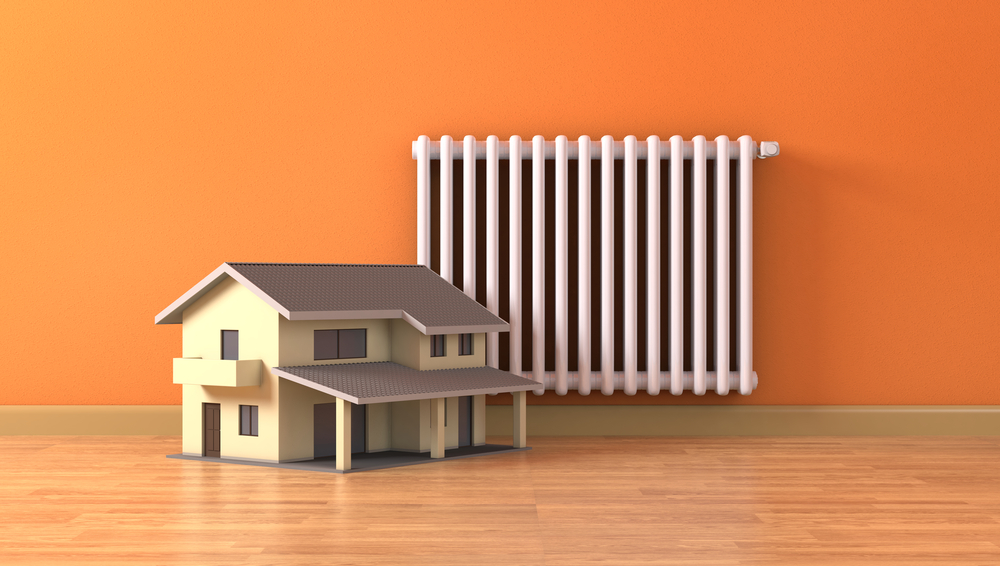As everyone snuggles into sweaters and fuzzy socks and indulges in a little leaf peeping, there’s no doubt that fall has arrived. The days are getting shorter, and temperatures are dropping. For most people, this means turning from keeping the house cool to keeping it warm.
Unfortunately, heating up a house can be an expensive proposition. That’s especially true if you don’t take a few measures to make certain that your home is as energy efficient as possible.
Many of the following tips are easy to complete and require little time or money. Nonetheless, they promise to keep your family toasty warm all winter long while also being kind to your budget.
Turn Down the Thermostat
When you come home at the end of a wet and chilly day, it can be tempting to crank that thermostat up to 72 degrees or even higher. However, energy experts advise setting an upper limit of just 68 degrees for the entire fall and winter.
According to the Department of Energy, people who turn their thermostat down by an average of seven to ten degrees for just eight hours a day will save as much as 10 percent on the cost of heating their home.
When you’re at home, resolve to set the thermostat to no more than 68 degrees. Turn the thermostat down a few degrees when going to bed to save even more money. To make it even easier to remember to turn down the heat, get a smart or programmable thermostat that automatically changes the setting according to the schedule you set.
Seal up Leaks and Drafts
Any gaps or cracks around doors, windows and other openings cause the heat in your home to leak outside. This means that your heating system has to work even harder to maintain a comfortable temperature inside your home.
Those gaps and cracks also let cold air into your house. As you might imagine, these small openings make your entire home less energy efficient.
Before the weather gets any colder, check around all of the windows and doors in the house to see if air is leaking around them. Other places where air leaks are likely to be found are:
- Attic hatches
- Baseboards
- Electrical outlets
- Air conditioners mounted in the wall or window
- Fans and vents, especially dryer vents
- Cable TV, phone lines and electrical service entrances
To check for a leak, try rattling the item. If it moves, it probably is leaking air. Check to see if daylight is visible around window and door frames. This indicates a need for weather stripping or caulking.
Open up the Drapes
The sun can provide welcome warmth on even the chilliest day. Open up your curtains, drapes and blinds to let in the sunshine when you are home during the day. It’s a natural source of heat, with your windows helping to dial up the warmth a bit. This means that you’ll likely be able to rely less on your heating system.
It’s also wise to select curtains and drapes for your windows that are insulating. These window treatments trap heat inside your home and prevent the cold from seeping through from the outdoors. Consider closing insulating window treatments whenever you are not at home and especially after the sun goes down and outdoor temperatures tend to drop.
Replace Your Heating System’s Filter
The air filter for your HVAC system provides a crucial access point for air flow. Thanks to the filter, harmful dirt particles and allergens are cleansed from your home’s air. However, if you do not routinely replace that filter, then it becomes clogged with dust and debris. This effectively cuts off the airflow, creating unnecessary resistance that strains your heating system.
Because your HVAC system has to work harder to do its job, your energy bills go up and your energy efficiency goes down. Check the heating system’s filter at least once a month. Some homeowners like to subscribe to a service that delivers new filters every month so that they never forget to change it. It’s also possible to invest in a permanent air filter that requires cleaning every month or two but doesn’t need to be replaced, which is an environmentally friendly option.
Reverse Ceiling Fan Direction
If you have ceiling fans, they probably get heavy use during the warmer months to keep your family cool. However, did you know that it’s possible to reverse the ceiling fan’s direction to keep you warmer in winter?
It’s true! In the summer, ceiling fans run in the counter-clockwise direction. This draws heat up while circulating cool air back down to you. Reverse the ceiling fan direction to clockwise in the winter to push rising heat back down to the floor, which will keep you warmer. As a bonus, this tip helps to better circulate the air from your heating system too.
Use a Little Foil
Put this energy efficiency tip into practice, and you’ll feel like a true DIY hero. All you have to do is place a sheet of tin foil behind your radiator. This radiates any heat that the radiator generates back into your home. Face the shiny side toward the radiator for best results.
Have Your Heating System Serviced
Regular maintenance is critical to the optimum performance of your heating system. If you can’t remember the last time you had an expert out to the house to ensure that everything with your furnace or heat pump was operating correctly, then it’s definitely time to call in some help.
An annual tune up may be just what your heating system needs to keep it working as efficiently as possible. Usually, these maintenance visits include essential checks of the blower, filters, ducts and coils. Technicians also look for leakage around ducts so that these can be eliminated. Other steps in the maintenance process may include:
- Lubricating the motor
- Inspecting belts for wear
- Looking for refrigerant leaks
- Measuring for adequate airflow
- Cleaning and tightening all connections
- Application of nonconductive coating
The technician who performs the service generally is prepared to take care of most replacement parts. However, if a larger problem is discovered, a return trip may be necessary. With your heating system running in tip-top shape, you’ll be ready for a warm and toasty winter.
Make Certain Your Fireplace Is Efficient
There’s nothing else quite like the crackling warmth of a fire on a cold winter night. Unfortunately, poorly maintained fireplaces are responsible for a great deal of energy loss.
Whenever you don’t have a fire, close the damper on the fireplace to keep cold drafts outside. When the fireplace is in use, reduce your thermostat to about 55 degrees, close the doors into the room and slightly crack one window or open up the dampers in the bottom of the firebox.
It’s wise to plug and seal the flue on any chimney in which fires are never set. If the seal on the flue damper is loose or doesn’t quite seal, then ensure that this gets repaired.
In homes where the fireplace is used for heating, use a heat-exchange system and tempered glass doors to ensure that you’re taking full advantage of all of the emitted heat.
Also, check around the hearth for cracks or holes where leaks may be occurring. Seal these with caulk to get the full heating effect of your fire.
A Couple of Bonus Tips
Check the temperature setting on your water heater. If it’s anything above 120 degrees Fahrenheit, switch it to this level. This lowers your heating costs and helps your family to avoid scalds.
When the holidays roll around, use strings of LED lights. These can save you tons of money and ensure your home’s energy efficiency even in the depths of winter.
Ask Delaware Heating and Cooling For Help
We’ve been helping our friends and neighbors enjoy cozier fall and winter months for years. Our customers have come to trust us to provide them with sensible advice that also saves them money.
As the cooler weather advances, let Delaware Heating and Cooling help you to take the proactive steps that are necessary to ensure that your family stays warm all fall and winter long without paying exorbitant energy bills.


Recent Comments